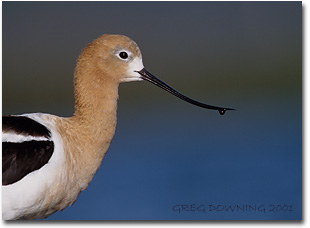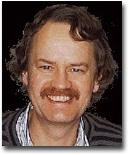|
|
 The Digital Corner
All rights reserved. The Mysterious "Digital Film" Regular cameras store photos on film and digital cameras store film on flash memory cards. By this logic (and the marketing ploy of one flash memory card manufacturer), memory cards are the digital equivalent to film, right? No, not exactly. Herein lies the power of abstraction: get abstract enough and you can compare everything to anything. But to do a real comparison we need to better understand both sides of the film-digital equation. Film is more than just storage For simplicity's sake we refer here to slide film which is used by most professional nature photographers. Traditional film is much, much more than just image storage. The film itself determines many characteristics of the final image:
An ambitious photographer does not just grab some film out of his or her bag. He uses a particular film of choice for a particular situation, and it takes a lot of effort to know this film. For serious photographers there is no one film which works equally well in all situations. Also, the ISO value and white balance of the film has to be taken into account. Film and photographer is much like marriage: the photographer has to trust the choice of film. One might expect that the film with the most correct color (a very complex issue by itself) would be the most widely used film. This is just not the case. If this were true there would be no market for high saturation films like Fuji Velvia©. The viewer of nature photos is not so much interested in absolute color correctness as in the "expressiveness" of the photo colors. Film, therefore, is merely a means to an end.
Digital photo storage On the non-film side of things, memory cards are just that: instruments of storage. There are many factors related to these cards which influence the process of taking digital photos (speed and reliability being two important factors) but none are related to the quality of the final photo. A digital photographer can therefore chose virtually any memory card and get the same quality of photos. So where exactly is the photo? With film, the photo (latent) is created as light reaches the surface of the film. Digital cameras, on the other hand, have a sensor (called a CCD or CMOS chip) which captures the light. To get a better understanding about how this works read this article by Daniel Stephens. The equivalent of what film does to the final image quality is, in the digital world, a function of the sensor design and implementation. But even saying this is not enough. Film is developed via an industry-standard process, which should yield the same quality in any properly setup lab. The sensor data, on the other hand, has to be interpreted by software. This will be done in-camera or outside on your PC (we will discuss this issue in more detail in a later installment). The influence of the software is the key to the final image quality in the digital world. Of course, if the data from the sensor is faulty, the final image suffers. But today we are probably not even close to realizing what software can do with the sensor data to achieve optimal image quality. My goal with digital cameras is to get the same quality of photos as Greg's photo demonstrates. This is quite a challenge, one that is not just related to the film vs. digital dichotomy. What happens if a photographer does not like his "digital film"? He or she only has to switch camera bodies and/or the software. This demonstrates that the key qualities of film (capturing the colors, resolution, etc) equate very directly to the complex digital hardware and software process. The development of film might be just as complex but the photographer does not need to understand anything about it to use the film well. This is not as true in the digital world. In the digital world, the shortcomings of the software make the digital photographer far more aware of the software nature of this process. I decided to write about this issue because matching film quality with digital camera output is the goal of many digital nature photographers. It's my opinion that a good understanding of the differences involved will help avoid comparing apples to oranges. Digital film is just not a touchable thing like real film. So much more is involved. US-NPN Comments on this column? Send them to the editor.
The Steinmuellers moved to California in 1997 and have been working seriously with digital photography since 1999. The Nikon D1/D1x/Kodak 760 are their digital cameras of choice today. Uwe is the editor of Digital Outback Photo, a web magazine dedicated to high quality outdoor photography using state-of-the-art digital SLRs. Other web sites include photodotcom.com and californiaplaces.com. |
|
|
 Let me illustrate this point with this excellent photo by Greg Downing. Few people probably care what the real, absolute colors were while taking this photograph. The photo shows very well the typical breeding plumage of an American Avocet. And the dark background colors enhance the beautiful expression and composition of this photo. That's what is important here, not the absolute colors. Film has gone a long way to provide the photographer with a very sophisticated medium to express his or her view of nature. I personally have always loved Kodachrome - not for being correct but for being so expressive.
Let me illustrate this point with this excellent photo by Greg Downing. Few people probably care what the real, absolute colors were while taking this photograph. The photo shows very well the typical breeding plumage of an American Avocet. And the dark background colors enhance the beautiful expression and composition of this photo. That's what is important here, not the absolute colors. Film has gone a long way to provide the photographer with a very sophisticated medium to express his or her view of nature. I personally have always loved Kodachrome - not for being correct but for being so expressive. Uwe Steinmueller (born 1947) started his photography with his wife
Bettina in Germany 1973.
Uwe and Bettina use a joint copyright for all photos, as they often do not
even know or care who took
the photograph. Their first joint exhibition took place in Bremen, Germany in 1978.
Uwe Steinmueller (born 1947) started his photography with his wife
Bettina in Germany 1973.
Uwe and Bettina use a joint copyright for all photos, as they often do not
even know or care who took
the photograph. Their first joint exhibition took place in Bremen, Germany in 1978.